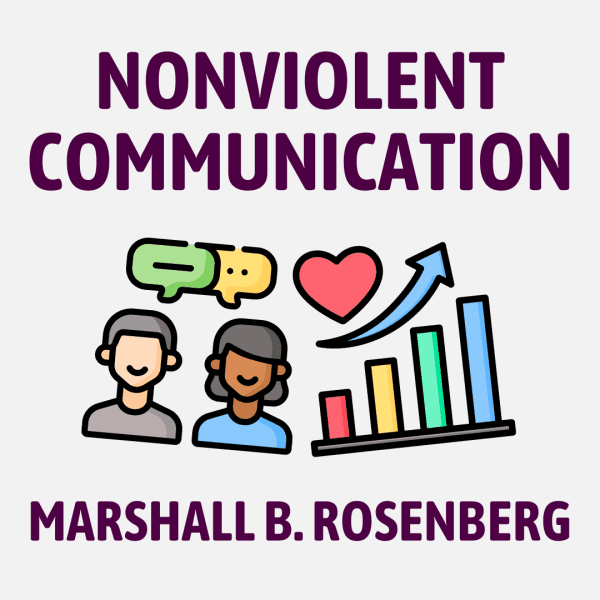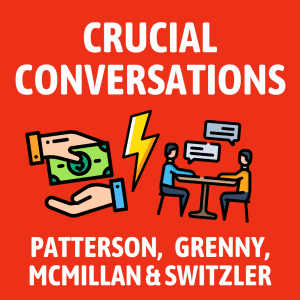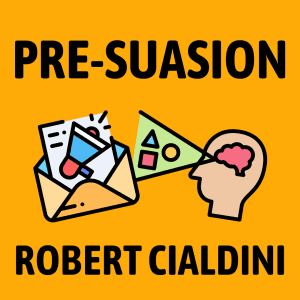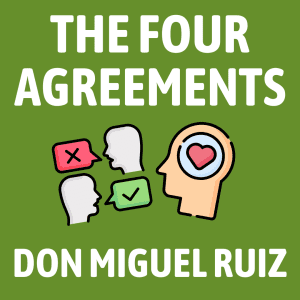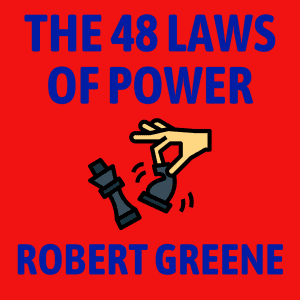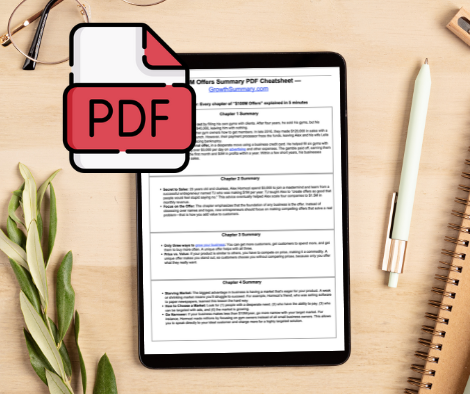🗣️ 1. Importance of Nonviolent Communication: Learn NVC to avoid speaking in ways that are ineffective and hurtful
The author of this book is psychologist Marshall Rosenberg. One time he was in a mosque in Bethlehem, standing in front of 170 Palestinian Muslim men and presenting his teachings about Nonviolent Communication.
All of a sudden, there was a disturbance in the crowd. The men began whispering furiously to each other. Rosenberg’s translator told him tensely, “They are whispering you are an American!” Then a man in the crowd jumped to his feet, pointed at Rosenberg and yelled as loud as he could “Murderer!” About a dozen other men joined in, calling him a child killer and assassin. This group of Palestinian men felt a lot of anger towards America for supplying tear gas and other weapons to Israel. Weapons that were used against the Palestinian people.
So, faced with this angry crowd, what do you think Marshall Rosenberg did? What would you have said and done in this situation?
Rosenberg immediately focused on the first man who yelled, focusing on what that man was feeling and needing at that moment. He asked the man, “Are you angry because you would like my government to use its resources differently?” And the man replied, “Damn right I’m angry!” and yelled that they didn’t need American tear gas and what they needed were sewers and better housing. The man talked about how miserable living conditions were for him and his family. How his son played in sewage and the classrooms had no books.
Then Rosenberg replied, “I hear how painful it is to raise your children here; you’d like me to know that what you want is what all parents want for their children—a good education, opportunity to play and grow in a healthy environment…” And this conversation continued for another 20 minutes, with the man expressing his pain and Rosenberg reflecting back the man’s feelings and needs. He didn’t agree or disagree, but aimed to make the man feel understood. And in less than an hour, the same man who’d yelled “murderer” was now inviting the American psychologist to his home for a Ramadan dinner!
This story illustrates the power of Nonviolent Communication. Nonviolent Communication (or NVC for short) is a framework created by Marshall Rosenberg that lets us better express our feelings and needs and make the people we talk to feel understood.
Now, most of us would never say that we talk to others in a “violent” way. Nonetheless, when we use the habits of communication we picked up while growing up, we often do cause hurt and pain to both ourselves and others. In any disagreement, people have a knee-jerk strategies of getting their needs met, these often include judging, blaming and criticizing the other person. This usually just makes the other person defensive, upset or angry. Through Nonviolent Communication, we can learn to express our emotions and desires more directly. This means we can move past interpersonal friction and conflicts more smoothly and reliably.
Most of us don’t believe we talk in a “violent” way, but our words do often hurt people. Nonviolent communication is a framework to help us express our feelings and needs without judging, blaming or criticizing others. It also shows us how to make others feel understood which diffuses conflict.
🚫 2. Don’t Judge Others: Judgment blocks mutual understanding, making it an ineffective communication strategy
The first communication strategy that we should absolutely avoid is morally judging others as good or bad. This often happens when people have some disagreement or conflict. We spent a lot of time judging, labeling and classifying the other person as good or bad.
For example we might say:
- “That was selfish!” or
- “Why are you so lazy?” or
- “Why don’t you consider people around you!”
Our attention is focused on classifying, analyzing, and determining levels of wrongness rather than on what we and others need and are not getting. Thus if my partner wants more affection than I’m giving her, she is “needy and dependent.” But if I want more affection than she is giving me, then she is “aloof and insensitive.”
We judge and criticize because we are trying to make the other person behave differently, to get our own needs met. But all that usually happens is the other person becomes defensive, upset or angry. Trying to make others behave differently by making them feel bad, guilty or ashamed just doesn’t work most of the time. So it’s best to avoid moral judgments in our communication altogether. Instead focus on finding out what all people involved are feeling and needing at the moment.
Criticism and moral judgments are ineffective attempts at getting our needs met. But making someone feel bad or guilty doesn’t work, it’s more likely to create defensiveness, resistance and resentment.
🤲 3. Don’t Blame Others: Taking responsibility for your own feelings and actions is important for good communication
So another ineffective communication strategy is blaming others for how we feel or what we did. Sometimes we speak in a way that denies our self responsibility and implies we had no choice. For example, “Stop making me angry.” The truth lies in recognizing the fact that outside things can be the stimulus for us feeling a certain way, but never the cause.
We deny responsibility for our actions when we attribute their cause to factors outside ourselves.
We often blame what we did on many outside factors like:
- The actions of others
- Social pressures, norms and roles
- Our personal labels, diagnoses, identity or past history
But the fact is, denying personal responsibility for our feelings and actions makes us dangerous. In her Book Eichmann in Jerusalem, Hannah Arendt reported how the Nazi Adolf Eichmann and his fellow officers used responsibility denying language called Amtssprache (loosely translated “bureaucratese”) to make their atrocious acts feel palatable. Although Eichmann was one of the chief organizers of the Holocaust, he claimed that he did only “what he had to do” and for the reasons of fulfilling his duty, following orders and obeying the law. Eichmann’s attitude toward his actions made Hannah Arendt at the end of her book coin the phrase “the banality of evil.”
We can replace language that implies lack of choice with language that acknowledges choice.
One example from the book is a school teacher who hates grading students because she feels like she is morally judging them. Yet Rosenberg said it was important she stop saying “I have to give grades because it’s the rules” and learn to say “I choose to give grades because I want to keep my job.” This simple shift in language acknowledged her choice and responsibility in the matter. In fact, she was giving grades in return for a benefit, not because she “had to.”
By the way, the best book I’ve read about self responsibility is Man’s Search for Meaning written by Viktor Frankl, a Jewish psychologist who survived the Holocaust. Make sure you read our summary notes of that book in the future! And my favourite quote from that book is:
“Everything can be taken from a man but one thing: the last of the human freedoms—to choose one’s attitude in any given set of circumstances, to choose one’s way.” -Viktor Frankl
Recognize that outside factors can be a stimulus for what you do, but never the cause. This includes other people’s actions, social expectations and your past history. Denying self responsibility for what we do makes us dangerous.
👁️ 4. First, Observe: NVC begins with making objective observations, while avoiding subjective evaluations
So now you’ll be learning the core of Nonviolent Communication, and it’s fairly straightforward. There are only four parts to it:
- Observations
- Feelings
- Needs
- Requests
Here is a quick explanation of how these four parts work in order (this is a quote from the author):
First, we observe what is actually happening in a situation: what are we observing others saying or doing that is either enriching or not enriching our life? The trick is to be able to articulate this observation without introducing any judgement or evaluation — to simply say what people are doing that we either like or don’t like. Next, we state how we feel when we observe this action: are we hurt, scared, joyful, amused, irritated? And thirdly, we say what needs of ours are connected to the feelings we have identified.
So when you are communicating nonviolently, you just have to say these four parts in order. Again, that’s observations, feelings, needs and requests. Don’t worry, we’ll be diving deeper into exactly what all these mean and how to do it.
Observations, Not Evaluations
Right now we’ll focus on making observations, which is the first part of this process. While most people think they already know how to make observations, they really don’t. The problem is that when we try to make observations, we usually mix in our evaluations. Our evaluations are not the facts of what happened, but they are our judgements, criticisms and other ways of analyzing what happened.
So the way to communicate in a Nonviolent way is to separate our observations from our evaluations. When we do this, then the person we’re talking to is far less likely to become defensive and resistant. This means we can solve our interpersonal issues more quickly and straightforwardly.
Marshall Rosenberg was called in one day to resolve an issue between the staff and the principal of a school. First he talked to the staff, asking them what the principle was doing that was preventing them from meeting their needs.
One person quickly blurted, “He has a big mouth!” And Rosenberg had to explain to everyone this was not an observation, but an interpretation and a value judgement of the behavior.
Another teacher remarked, “He talks too much!” which was again not an observation of specific behavior, but an evaluation of how much the principle talked.
Another chimed in, “He thinks only he has something worth saying” which was also not an observation, but a guess of what the person thinks or desires.
So after some time, the staff and Rosenberg worked together to create a list of behaviors the principal did that bothered them. This list was made up of descriptions of specific behaviors without judgment or evaluation of those behaviors. For example, the principal often brought up stories from his childhood in staff meetings, which usually caused them to run 20 minutes overtime. When this observation was communicated to the principal, he exclaimed “Why did nobody ever tell me!”
The four parts of Nonviolent Communication are observations, feelings, needs and requests. The first part of this is communicating your observations of specific behaviors the other person did, without mixing in your evaluations, interpretations or judgements about that behavior.
❤️ 5. Second, Reveal Feelings: The next step is to express your genuine emotions instead of your opinions
So after making an observation, you have to express your feelings about what you observed. Like the previous step, this is a little trickier than it looks. When most of us think we’re expressing feelings, what we’re really doing is expressing our opinions, interpretations and assessments about others.
A big reason for this confusion is the English language itself. We often begin sentences with the words “I feel…” but don’t end up expressing our inner feelings at all. For example, all these following statements are not expressions of inner feeling, but interpretations of people’s behavior:
- “I feel Jerry is being rude” or
- “I feel that people should be nice” or
- “I feel like you don’t take me seriously”
There are also statements like “I feel ignored” that are not expressions of feeling either. Being ignored can feel like a negative thing if you want to be noticed, but a positive thing if you don’t want attention. So the right way to express this is: “I feel hurt that no one talked to me.” Hurt is an inner feeling, ignored is not a feeling. And neither are words like:
- abandoned
- abused
- cheated
- diminished
- ignored
- manipulated
- misunderstood
- pressured
- rejected
- threatened
- unwanted
- used
Examples of Feeling Words
So what words do express inner feeling? Well, here’s a short list of positive and negative feelings to give you an idea:
Positive Feelings:
- amused
- appreciative
- astonished
- calm
- comfortable
- confident
- elated
- excited
- glad
- grateful
- hopeful
- loving
- mellow
- optimistic
- refreshed
- relaxed
- warm
Negative Feelings:
- afraid
- angry
- annoyed
- ashamed
- cold
- disappointed
- discouraged
- disgusted
- dull
- embarrassed
- helpless
- hurt
- jealous
- overwhelmed
- reluctant
- sad
- worried
Most of us don’t express our feelings, but our opinions, interpretations and assessments of others. As a general rule, make sure you follow the words “I feel” with an actual inner feeling like “sad”, not “I feel like” or “I feel that” which are interpretations.
💬 6. Third, Communicate Needs: Share your needs with the other person clearly instead of criticizing them
Next we must connect our feelings to our unmet needs. At the root of our feelings, there is always a need. If we feel great, it’s because our needs are being met. If we feel bad, it’s because our needs are not being met.
People have many natural needs. We have needs for safety, health, respect, love, trust, warmth, autonomy, understanding, intimacy, support, fun and many more.
The problem is that when one of our needs is not being met, most of us never learned how to communicate this. We are more likely to judge, criticize or diagnose the people around us in an attempt to change their behavior.
Analyses of others are actually expressions of our own needs and values.
So what’s the difference between communicating a need and a criticism? Well, imagine a wife is upset because her husband works late every evening and she says, “You care about your work more than me.” That is criticism and it’s likely to provoke defensiveness. On the other hand, she could say, “I feel lonely because I need more connection and intimacy”. With this sentence, she is revealing her feeling and connecting it to an unmet need, without criticizing the other person.
A good formula to follow is this: “I feel abc… because I need xyz.” Make sure you absolutely avoid saying “I feel abc… because you did xyz.” That goes back to blaming the other person for how we feel. But when you say “I feel this, because I need this…” then you are simply recognizing, owning and clearly communicating your needs.
Next we must connect our feelings with our unmet needs. We all have needs for love, respect, safety, etc. A good formula to follow is: “I feel abc… because I need xyz.” This allows us to communicate our unmet needs, without criticizing or blaming the other person.
📝 7. Fourth, Make a Request: Ask for what you need respectfully, without making demands
The last part of Nonviolent Communication is making requests. This is when you tell the other person exactly what they can do to meet your needs. And your requests must be concrete and specific. Often we make the mistake of asking someone to change using language that is too abstract and vague.
At one of Marshall Rosenberg’s workshops, he met a woman who was telling her husband “I want you to give me the freedom to grow and be myself.” Well, an ambiguous statement like that will leave most people scratching their head as to what specific behaviors they should change. Also unclear requests are very likely to provoke resistance and arguments like “But I do give you lots of freedom!”
Rosenberg asked the woman more questions to clarify what specific behaviors she wanted to see from her husband. She struggled for a few minutes and finally admitted “I guess I want him to smile no matter what I do and say it is okay.” And when she could finally express what she wanted in clear and concrete terms, the woman realized that her request left her husband little freedom to be himself in the relationship and have his own needs respected.
Often, the use of vague and abstract language can mask oppressive interpersonal games.
Avoiding Demands
Another part of making effective requests is to avoid demanding the other person do what you want. The difference between a request and demand is that demands make the other person believe they will be punished if they don’t do what we say. So we should make it clear to the other person that we only want them do follow our request if they can do so of their own free will. You will not punish them in any way if they don’t comply. Why? Because when people follow our requests out of guilt or fear of punishment, then the relationship will have growing resentment. Better they follow our request out of compassion and consideration.
To avoid making demands, be aware when you begin having thoughts like “He should do this” or “She is supposed to do that” or “I deserve this.” This kind of thinking will make it sound like you’re demanding a certain behavior out of duty, obligation or hidden reciprocity.
So I hope you’re getting a sense of the overall formula by now. In a nutshell, Nonviolent Communication is:“When this happens, then I feel this because I need this. So I would like you to do this instead.” And if someone says no to your request? It doesn’t mean you should give up right away. But first fully empathize with what is stopping them from saying yes, before engaging in further persuasion.
The last step is making a request, this means telling someone what they can do to meet your needs. Use concrete language to describe specific behaviors. And make sure they know you’re NOT demanding or threatening punishment if they don’t do what you say.
👂 8. Give Empathy, Not Advice: Offer understanding and empathy before providing advice or reassurance
So we’ve spent a lot of time now exploring how to express ourselves, now we’ll switch focus and learn how to receive other people’s communication.
The most important part of receiving others is to always begin with empathy. When other people confide in us, many of us have a knee-jerk response of offering advice or reassurance. This may be our attempt to “fix” whatever problem is bothering them. Yet much of the time, when someone discloses their feelings, what they really need is empathy. So it’s always better to ask before giving advice or reassurance, because that’s usually not what the other person is needing.
Marshall Rosenberg was sitting in his kitchen one morning when suddenly his daughter walked downstairs, looked in the mirror and said she was as ugly as a pig. He heard this and declared that she was the most gorgeous lady in the world. This comment seemed to make her feel even worse than before and she ran back upstairs. He realized in that moment that what she probably needed was not reassurance but empathy. So he could have asked, “Do you feel bad about how you look today?”
The most important part of empathy is being present with the other person and what they are feeling. It’s not about intellectually understanding their situation. In fact, when a psychologist is too busy intellectually understanding someone’s situation or connecting it to a psychology theory, that can actually stop empathy.
You’ll know the other person has received enough empathy when they stop sharing or look visibly relieved. At that point they will be now open and prepared to hear your own feelings and needs.
When others disclose feelings to you, it’s best to start with empathy. This requires you to be present with the other person, rather than intellectually understanding their situation. And it’s always better to ask before offering advice or reassurance.
🌡️ 9. Diffuse Anger: Calm anger by recognizing and reflecting messages that are charged with emotion
A great tool for showing empathy is paraphrasing. This means reflecting back what the other person just said in a way that demonstrates you understand. For example, if your child says “I hate school!” then you can reply “Are you feeling sad because you’re not enjoying your classes?” This type of question lets the person either agree that you understand, or they will clarify what they really meant. When you’re confronted by an angry person, this tool can be especially helpful.
Our typical response when someone is angry to us, is to deflect the blame and say “but it’s not my fault!” or “but I didn’t mean to!” or something similar. This is usually the wrong move. Rosenberg jokes that we should never put our “but” in the face of an angry person. The proper response to diffuse anger is to empathize.
A young woman was working at a drug detox centre in Toronto. Late one night a man who’d clearly taken drugs walked in and demanded a room. When she began explaining all the rooms were full, the man jumped on her, pinned her to the floor by sitting on her chest and brought a knife to her throat shouting, “Don’t lie to me! You do have a room!”
The woman remembered the Nonviolent Communication training she’d taken just a few weeks before and knew she had to respond with empathy rather than argument. So she listened for the feelings and needs underneath the man’s words and said “It sounds like you’re really angry and want a room.” The man replied that he may be an addict, but he deserves respect damnit!
And the woman continued to reflect that back saying “Are you mad not getting the respect you want?” This went on for a while longer, and the empathy was clearly diffusing the man’s anger. Eventually he got up and the woman helped him find a room in another centre. She was certain that if she’d responded with “but the rooms really are full!” then the man would have slit her throat.
The best way to respond to anger and emotionally charged messages is with empathy not argument. Paraphrase what they said to reflect back their feelings. Once they feel a little understood, they usually calm down.
🔍 10. To Handle Criticism: Hear and understand the unmet needs beneath criticism before taking it personally
Marshall Rosenberg says there are four ways we can handle criticism:
- We can blame ourselves and accept the other person’s judgement. This often comes at a great cost to our own self esteem. For example: “Yes, I should have been more thoughtful.”
- We can blame the other person, deflecting the criticism back at them. Example: “No, you should be less sensitive and touchy!”
- We can express our own feelings and needs at that moment. Example: “When you say I’m too demanding, I feel terrible because I need…”
- We can coax the other person to express their feelings and needs. Example: “Are you feeling bad because you need…”
In the face of any criticism or other negative message, our best option is always to look past the inflammatory words to the unmet needs beneath them. For example, your partner calls you lazy. You can accept the judgment and feel shame, or you can call them a bad name in return which solves nothing, or you can look for the need underneath the words: “Are you saying I’m lazy because you need less feeling of chaos and disorder in our living space?”
A basic premise of NVC is that whenever we imply that someone is wrong or bad, what we are really saying is that he or she is not acting in harmony with our needs.
Criticism, judgment, anger, the silent treatment, rolling eyes. Underneath any negative message, there is an ineffective attempt to get a need met. So rather than taking those messages personally, we can instead shine the light of our attention to what the other person is feeling and needing at that moment. Once the other person is clear we understand their unmet needs, it is usually straightforward to solve the underlying issue. And the games of indirect manipulation can be left behind.
By the way, a great book for learning how to handle criticism better is The Four Agreements by Don Miguel Ruiz. One of the top lessons from that book is, “Never take anything personally.” Make sure you check out our summary notes of that book as well.
When faced with criticism, we can either blame ourselves and feel bad, blame the other person and accomplish nothing, or listen to the unmet needs beneath their words. This last option is by far the most productive.
👶 11. Guide, Don’t Punish Kids: Educate children with positive reinforcement, rather than with short-term fear-based tactics
Some parents say that punishment is the only way they can make their kids do what is good for them. This punishment may include corporal force, judgmental criticism and taking away privileges.
While punishment may be successful altering behavior in the short term, it can often fail when it comes to your more important long term goals as a parent. If all you ask is, “What do I want my kids to do now?” then punishment seems to work. But if you ask the question, “What do I want my kids reasons to be for doing this?” then punishment can often be counterproductive.
When someone is motivated to do an action out of fear, they can become blind to the more important reasons for doing that action, like the long term benefits or the intrinsic rewards. For example, would you want your kids to read books because they love to learn, or because they will be punished if they don’t?
Beyond that, when you control someone’s behavior through fear, that often lowers their self esteem and goodwill towards you. Being forced to do anything out of fear creates resistance towards that very activity and hostility towards the person enforcing the punishment. Worst of all, threat of punishment can even make kids blind to the underlying compassion that motivates parental demands. So you’re solving one problem while creating other ones.
Motivating kids through threat can be counterproductive. It can work in the short term, but make them blind to the intrinsic benefits or long term benefits of whatever activity they are being forced to do.

